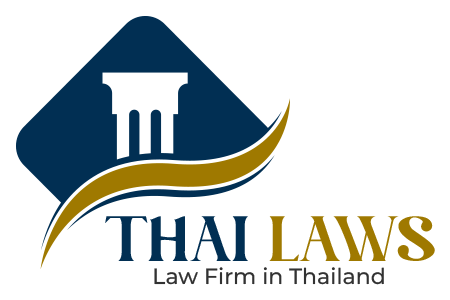Property Mortgages in Thailand. In Thailand, a property mortgage is not merely a loan secured by real estate; it is a formally constituted and publicly registered security interest that creates a powerful, in-rem right—a right attached to the property itself, enforceable against the world. Governed primarily by the Thai Civil and Commercial Code (CCC), the mortgage process is a meticulously structured transaction designed to provide certainty for lenders and, in turn, facilitate access to capital for borrowers. Understanding its intricate mechanics, from creation to enforcement, is essential for any investor, homeowner, or financial professional operating within the Kingdom.
The Philosophical and Legal Foundation: A Right in the Property, Not Over the Person
The core principle of a Thai mortgage, as defined in Sections 702-746 of the CCC, is that it is a non-possessory security interest. The borrower (mortgagor) retains physical possession and use of the property, while the lender (mortgagee) obtains a legal right over the property’s value as security for the debt. This right is not a personal promise; it is a real right (jus in re) that is inscribed onto the very title deed of the property at the local Land Office.
This act of registration is what gives the mortgage its potency. Once registered, it becomes public knowledge and binds all subsequent owners of the property. A future purchaser would acquire the property subject to the existing mortgage, creating a powerful incentive for the debt to be settled upon transfer. This system of public registration, a hallmark of the Torrens land title system Thailand employs, provides a high degree of certainty and transparency for the credit market.
The Hierarchy of Collateral: Not All Property is Equal
The acceptability and loan-to-value ratio (LTV) of a mortgage are heavily influenced by the type of land title deed offered as collateral. This is a critical, often overlooked, dimension of Thai mortgage underwriting.
-
Chanote (Nor Sor 4): The “gold standard” of title deeds. Its state-guaranteed boundaries and indefeasible title make it the most desirable and bankable collateral. Financial institutions offer the highest LTV ratios (typically 70-90% for Thai nationals, lower for foreigners) on Chanote land.
-
Nor Sor 3 Gor (NS-3G): A high-grade title that is also generally acceptable to banks, though it may be subject to more stringent verification and potentially a slightly lower LTV due to the 30-day public posting requirement for transactions.
-
Nor Sor 3 (NS-3) and Lower Titles: Land with these lower-grade titles is often unacceptable as collateral for formal bank mortgages. The lack of guaranteed boundaries and the vulnerability to third-party claims make the security too risky for most institutional lenders.
The Mortgage Creation Process: A Ritual of Registration
The establishment of a valid, enforceable mortgage is a formal process that culminates at the local Land Department Office (Sanam Glur). It is not effective until this registration is complete.
-
The Underlying Debt Instrument: The mortgage itself is an accessory contract, meaning it secures a primary obligation. This is typically a loan agreement or promissory note. The terms of this primary debt—interest rate, repayment schedule, default clauses—are paramount.
-
The Mortgage Agreement: This is the specific contract creating the security interest. It must clearly identify the parties, describe the secured property (using its official title deed number and location), and state the maximum amount of the secured debt, including principal, interest, and associated costs of collection.
-
Registration at the Land Office: The borrower (and their spouse, if applicable) and the lender’s representative must appear together at the Land Office with the following:
-
The original title deed (Chanote or NS-3G).
-
The Mortgage Agreement.
-
Official identification and company documentation.
-
Proof of the underlying debt (the loan agreement).
The Land Office official will then register the mortgage by annotating the back page of the title deed. This annotation becomes a permanent part of the property’s history. The physical deed is typically held by the lender for the duration of the mortgage to prevent the borrower from engaging in unauthorized transactions.
-
The Anatomy of a Registered Mortgage Annotation
The notation on the title deed is a rich source of information for any expert conducting due diligence. It will specify:
-
The Mortgagee: The name of the lending institution or individual.
-
The Secured Amount: The maximum cap of the lender’s security interest.
-
The Date of Registration: The exact moment the security interest was perfected.
-
The Official Seal and Signature: Of the Land Office official, giving it state sanction.
The Rights and Remedies: The Path to Enforcement
A mortgage’s true power is revealed upon default. The CCC provides the mortgagee with two primary, and distinct, paths to recovery. These are often misunderstood.
-
Foreclosure through the Court (The Standard Route): This is a formal legal process where the mortgagee files a lawsuit against the mortgagor. Upon obtaining a court judgment, the property can be sold at a public auction. The proceeds are then used to satisfy the debt, with any surplus returned to the mortgagor. This process is judicial, transparent, and can take 12-24 months, but it provides a clear title to the new purchaser.
-
Public Auction by Virtue of the Mortgage Deed (The Special Power): This is a powerful, extra-judicial remedy. If the mortgage agreement explicitly grants the power of “sale by virtue of mortgage,” the lender can, upon default, petition the court for permission to sell the property at a public auction without a full trial on the underlying debt. This process is significantly faster than foreclosure, often concluding within 6-12 months. It is the preferred remedy for most financial institutions and underscores why the specific wording of the mortgage contract is so critical.
It is a crucial point of Thai law that a mortgagee cannot simply “repossess” a property and take ownership. The concept of a “deed in lieu of foreclosure” is not recognized. The only legal ways to extinguish the mortgagor’s right of redemption are through a court-supervised or court-approved public auction.
The Foreign Borrower: A Landscape of Constraints
For foreigners, the ability to secure a mortgage in Thailand is constrained by both law and banking policy.
-
Condominiums: Foreigners can obtain mortgages for condominium units in buildings where at least 51% of the units are Thai-owned. LTV ratios are typically lower, often capped at 50-60% of the appraised value.
-
Land: A foreigner cannot directly own land in Thailand. Therefore, they cannot mortgage it. Complex structures involving long-term leases or Thai companies (which themselves face borrowing restrictions under the Foreign Business Act) are used, but these are inherently riskier and subject to stringent legal and banking scrutiny.
Conclusion: A System of Calculated Security
The Thai property mortgage is a sophisticated legal instrument built on a foundation of public registration and precise statutory remedies. Its strength lies in its transparency and the powerful, in-rem rights it confers upon the lender. For the borrower, it provides access to capital but demands a clear understanding of the severe consequences of default. For the investor conducting due diligence, a mortgage annotation on a title deed is not just a note of debt; it is a map of financial encumbrance and potential future litigation. Success in this arena requires respecting the mortgage not as a simple loan, but as a deeply rooted legal claim on an asset, one that can only be created, and ultimately dissolved, through the deliberate and formalistic procedures of the Land Office and the Civil Court


